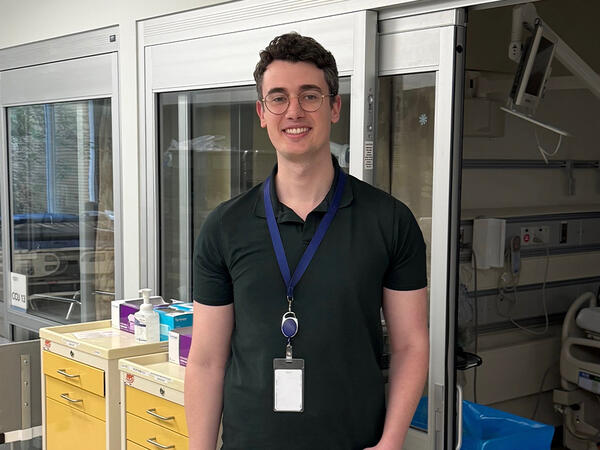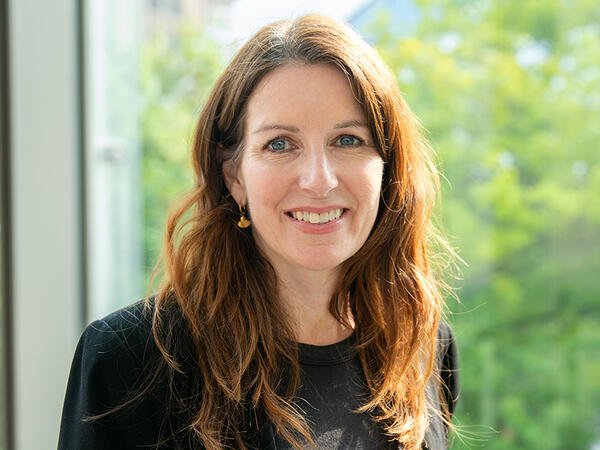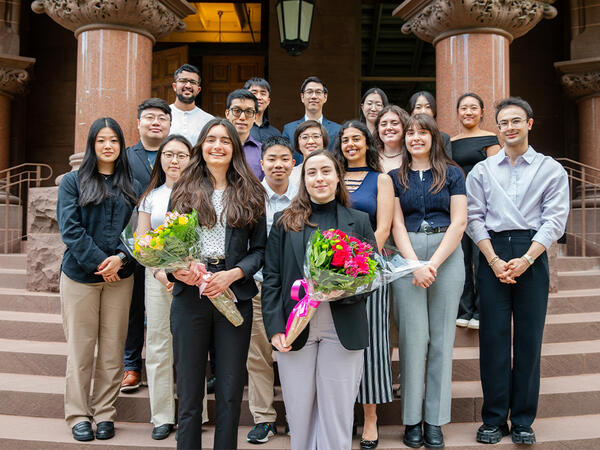Assistant Professor Ayman Chit discusses challenges of vaccine development and distribution for industry and governments
Less than a year after COVID-19 was first diagnosed, the first vaccines against the disease have arrived in Canada and are being delivered to high-risk populations. Ayman Chit, Assistant Professor at the Leslie Dan Faculty of Pharmacy and Medical Vice President at Sanofi, recently published a paper that used modelling to help industry answer difficult questions about investing in vaccine development and testing.
He spoke with LDFP Communications about some of the challenges and questions related to the vaccine that remain for industry, governments and the public.
How much of an accomplishment is the development of multiple vaccines for COVID-19?
It’s pretty remarkable. It usually takes about 10 years to make a new vaccine, and for some diseases like HIV, we simply haven’t been successful at all. Here, we have a vaccine developed in less than a year. The other remarkable thing is the probability of success. On average, you need to test 10 vaccine candidates in humans before one is approved. Here, we went from nobody trying to develop a vaccine for this novel coronavirus to hundreds of candidates in preclinical and clinical development in less than a year, of which we already have two that have been approved or are close to approval by major regulators.
In your recent research, you used epidemiologic modelling to forecast short-, mid- and long-term scenarios in the pandemic to help industry make informed decisions. What types of decisions did pharmaceutical companies have to make in the early days of the pandemic regarding vaccine development and testing?
We needed an understanding of whether the pandemic could be controlled quickly through social interventions, which affects how much resource from industry gets diverted into vaccine development. Our modelling showed that we really needed to put substantial effort in vaccine development because COVID-19 was going to be tough, probably impossible, to control through social measures, it was going to have a significant morbidity and mortality, and people were going to need the vaccine.
The industry also needed an understanding of how bad this pandemic would be and what the demand for a vaccine would be. The models showed that when you scale up the impact of the pandemic, it’s really devastating and the demand for a vaccine was going to be high. It’s great that Moderna and Pfizer have vaccines that are either approved or close to approval now.
But most optimistically, they can make a few hundred million doses a year, and the demand from public health will be in the order of billions. In fact, for companies that are also working on vaccine candidates, the signal is “don’t slow down.” We all need to cross the finish line if we can and have our maximum production capacity.
What are some of the risks that we will need to content with over the next few years as we continue learning about COVID-19?
For clinical testing, with two vaccines being approved now, there are ethical questions about testing. Can you test against a placebo? We have to test against the standard of care. That’s a tough question that we’ll have to contend with as vaccines become more available.
The other big risk is in manufacturing. Manufacturing capacity for these types of biologics is limited, and other biologics also need to be made. At some point, there are tough decisions to make around what we will stop making to make the coronavirus vaccine instead. And if the demand for the vaccine is what we think it will be, it may mean disruptions to other areas where there are needs.
This is the largest vaccine campaign in modern history. What are some key considerations that governments must take in this rollout?
First, there’s the very traditional one – who gets it first? We’ve studied the epidemiology quite well at this point, and we understand the groups who are highly impacted – people over 65, people with chronic conditions, health-care and frontline workers – and who is not as affected. Knowing these things helps to prioritize. We can start with the highest risk groups before moving to more general public vaccination programs, and I think the government has a plan for this.
The second order challenge is how you physically get the vaccine to the public. The two vaccines need to be kept at very cold temperatures, and this introduces a new order of logistical challenges that need to be planned for and thought about. In parts of Canada and the US, it’s a bit easier because there’s relatively good infrastructure. But in remote parts of Canada and in developing countries, like in Latin America or in Africa, where the infrastructure is poor, it becomes more difficult. Hopefully more vaccine candidates arrive that are more stable at the usual temperatures that we usually transport vaccines.
How can we address vaccine hesitancy or uncertainty?
One should assume that there’s going to be a lot of hesitancy out there because we see it for regular vaccines that have been out for a while. Dismissing it is not the right answer. We need to listen carefully to the information that is circulating, and if there is misinformation out there, we need to communicate and build trust. Focusing on the science and medicine is really critical. We need the right spokesperson to use the right language without too much jargon.
What’s the best approach to communicating and managing risk?
One of the things that’s very important is helping people put risk in perspective. We are inherently bad at processing risk, and we’re even worse at assessing statistics. We need to find the right tone and the right language to help people think about the risk.
We also need to think about using language and social media platforms that people are accustomed to consuming. These platforms are changing how people communicate and receive information. We need to be progressive and try to work through channels where information is being consumed.
What might the role of pharmacists be in an immunization campaign?
Pharmacists have the potential to be at the forefront of distributing these vaccines en masse. The pharmacy chain and pharmacists as health-care professionals offer huge capacity in our health-care system. They have experience vaccinating with the influenza vaccine, which targets the same population as the COVID-19 vaccine. Pharmacists understand the basics of how to vaccinate adults, and they’ve experimented with their infrastructure to offer the flu shot. Those learnings can be applied in a COVID-19 immunization campaign.
More News
Image

Pharmacy alum’s research shows how full-scope practice improves cancer care
Honoured with a national award, Adrian de Boer says his residency experience was a powerful reminder that he's making a meaningful change to the pharmacy profession.
Read More
Image

Pharmacy alum passionate about helping community pharmacists practice to full scope
As a pharmacy leader at Rexall, Heidi Wittke uses frontline experience to lead initiatives that improve patient care
Read More
Image

Bridging Research and Industry: GRIP 2025 highlights innovation and real-world impact
Over 200 attendees from academia, healthcare, and industry gathered last week for the 2025 GRIP symposium, celebrating the depth and diversity of graduate student research.
Read More
